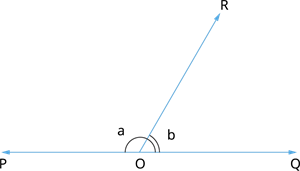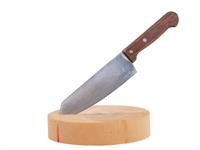PDF chapter test TRY NOW
Let us discuss what linear pair of angles are.
Definition:
Linear pair is a type of angle formed by two adjacent angles, whose non-common sides are opposite rays.
In other words, the sum of the linear pair of angles is supplementary (180^{\circ}).

In the figure, the sum of the linear angles POR and ROQ is equal to 180^{\circ}.
That is, a + b = 180^{\circ}.
Example:
If x and y are the measures of linear pair of angles, then find the value of y given x = 65^{\circ}.
Solution:
Given that, x = 65^{\circ}.
By the property of linear pair of angles, x + y = 180^{\circ}.
\Rightarrow 65^{\circ} + y = 180^{\circ}
\Rightarrow y = 180^{\circ} - 65^{\circ}
\Rightarrow y = 115^{\circ}
Some real life examples:
The following are some real-life examples where we can observe linear pair of angles.
- The ladder makes a linear pair of angles with the ground.

- The writing quill in the inked dip makes a linear pair of angle with the table.

- The knife makes a linear pair of angle with the chopping board.

